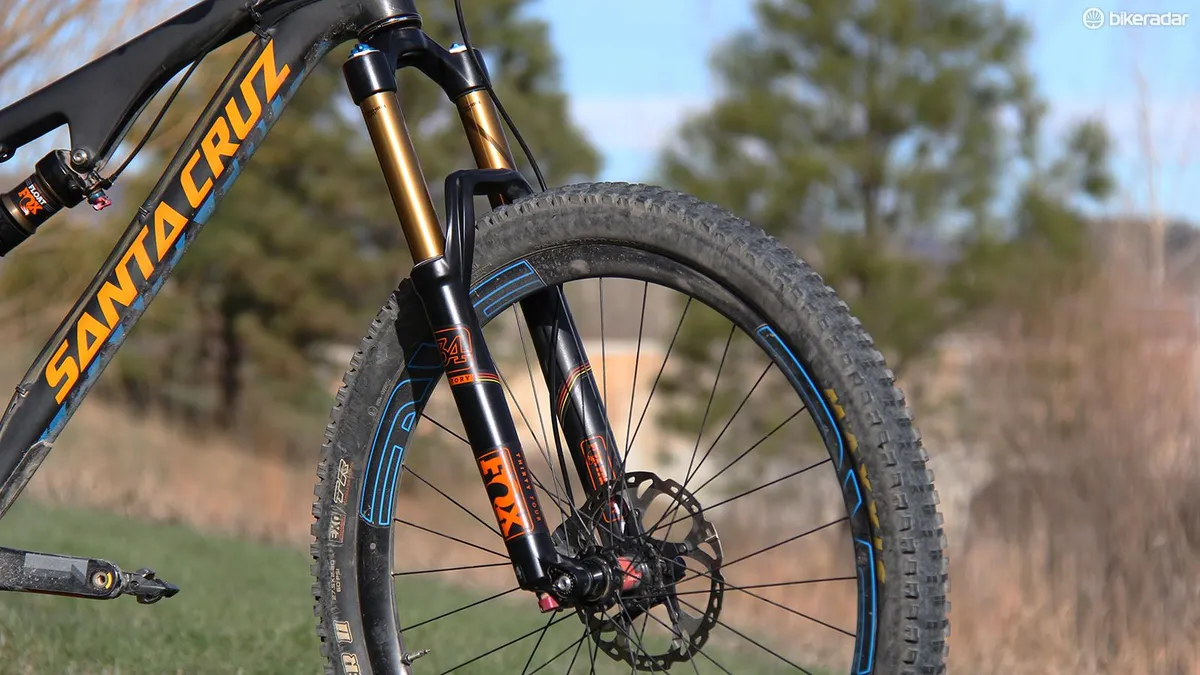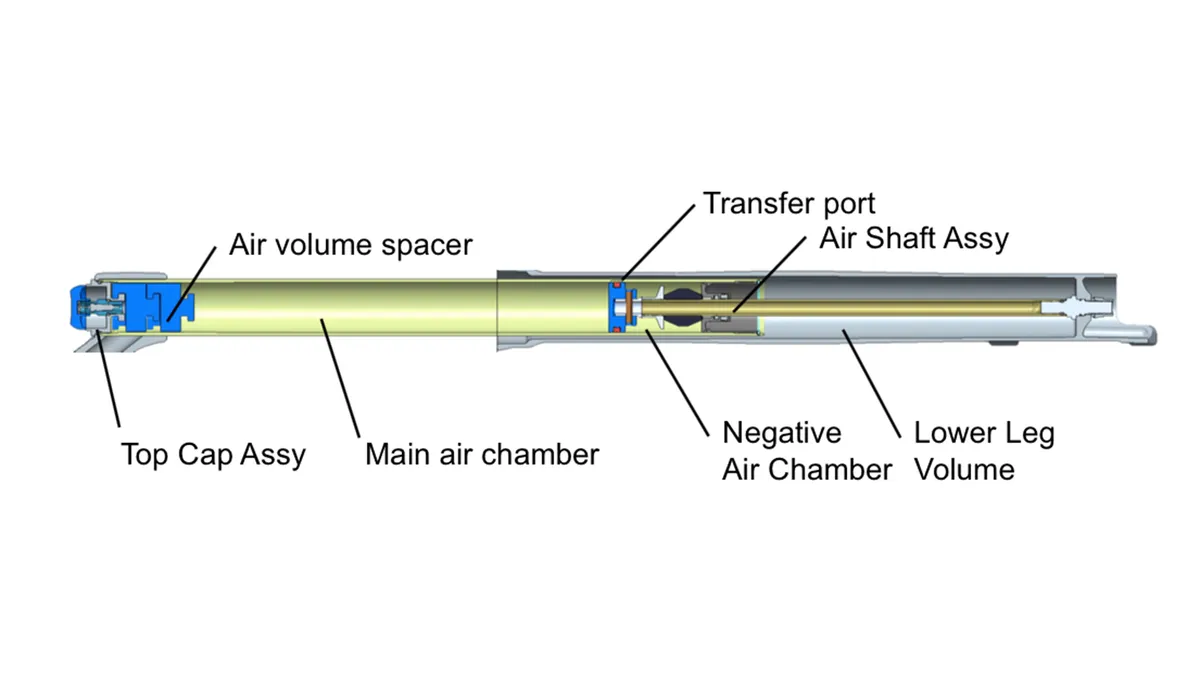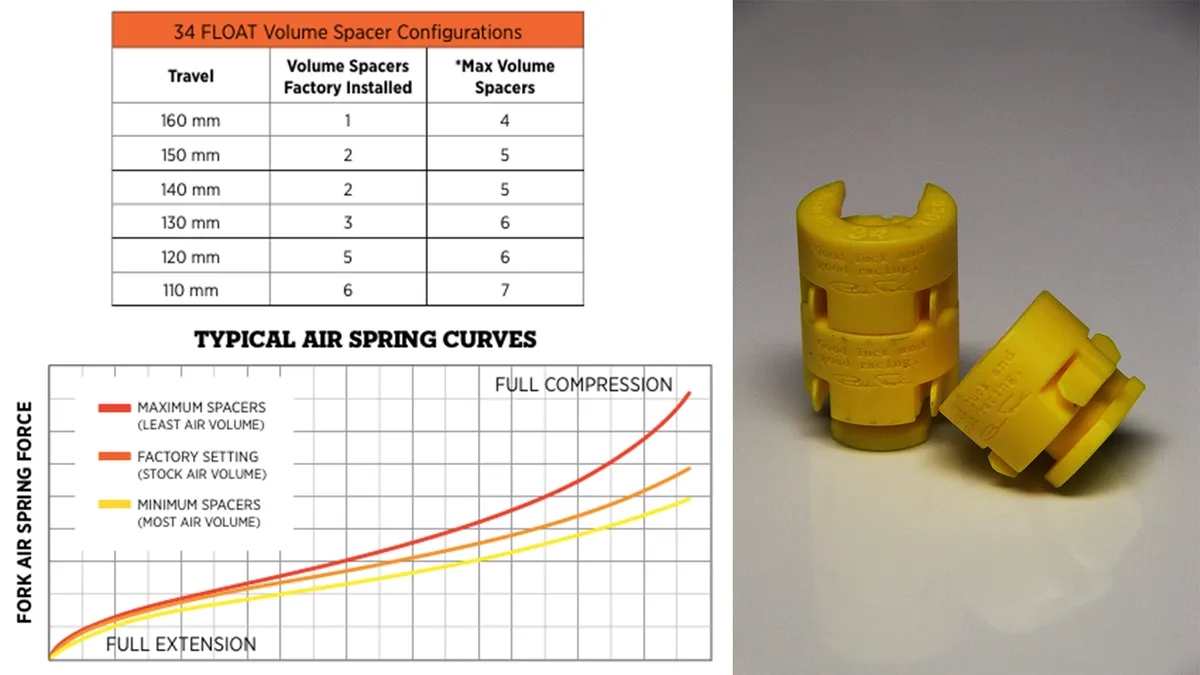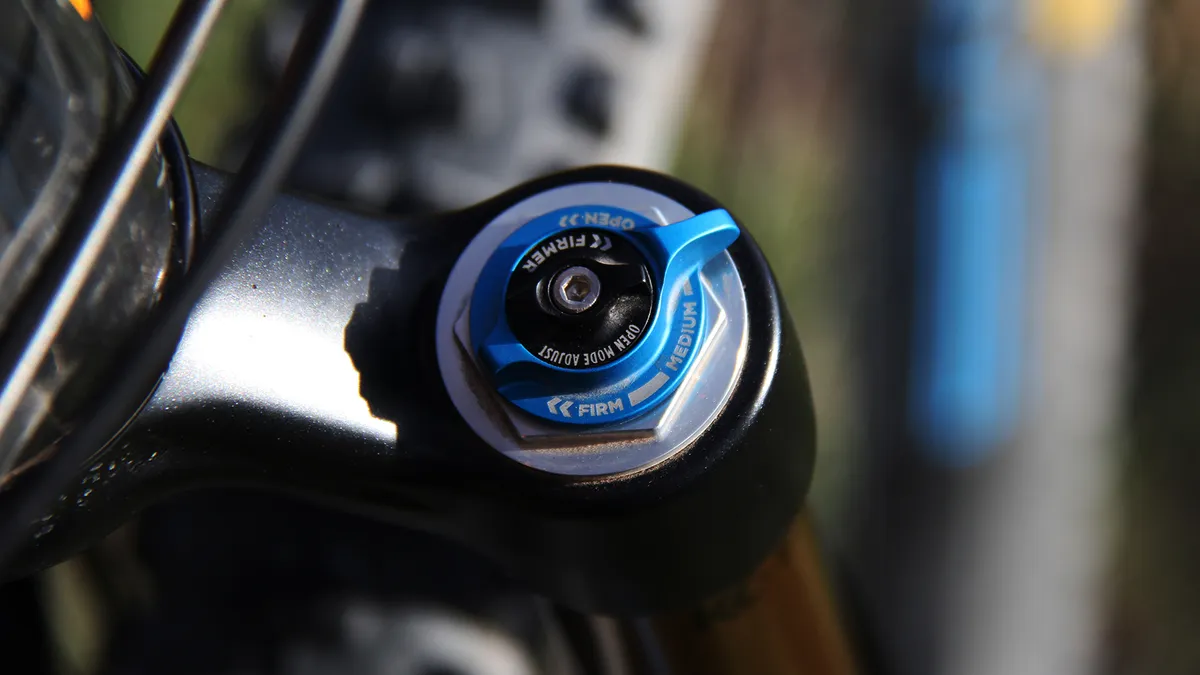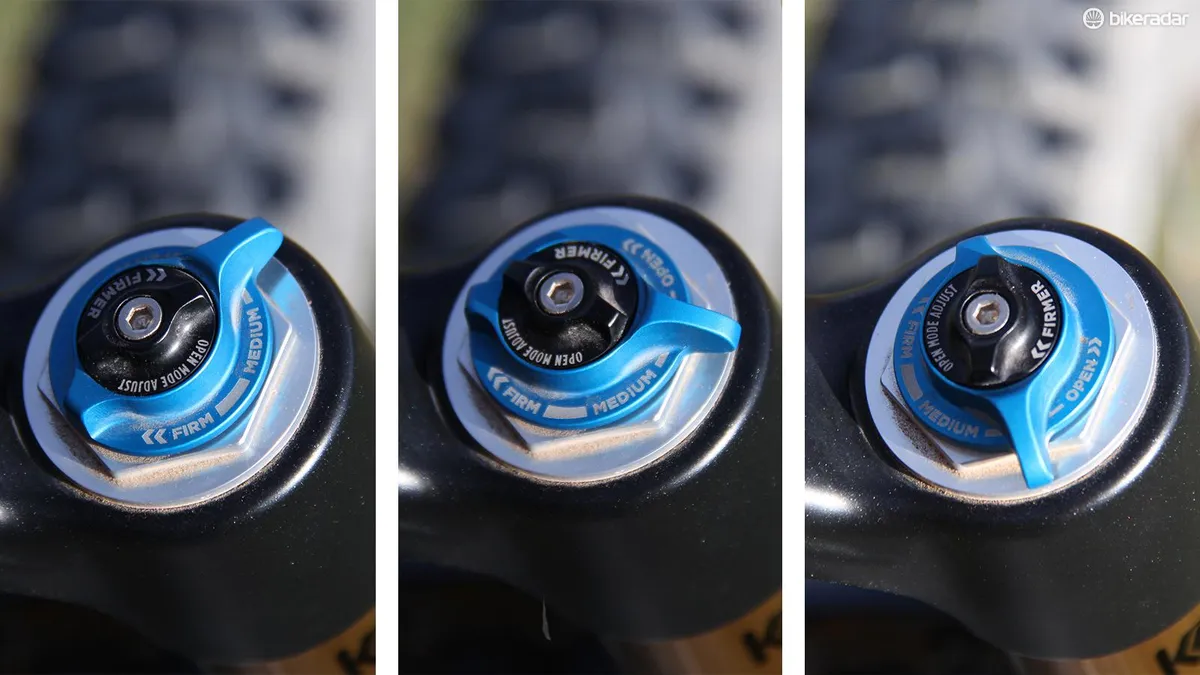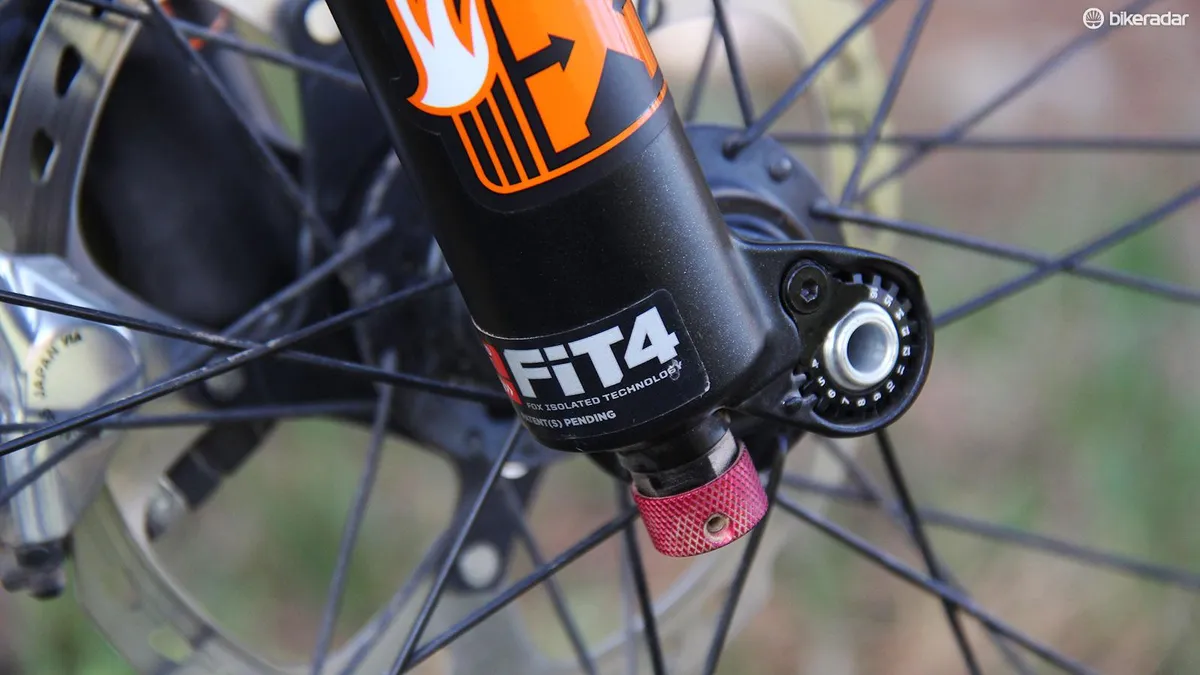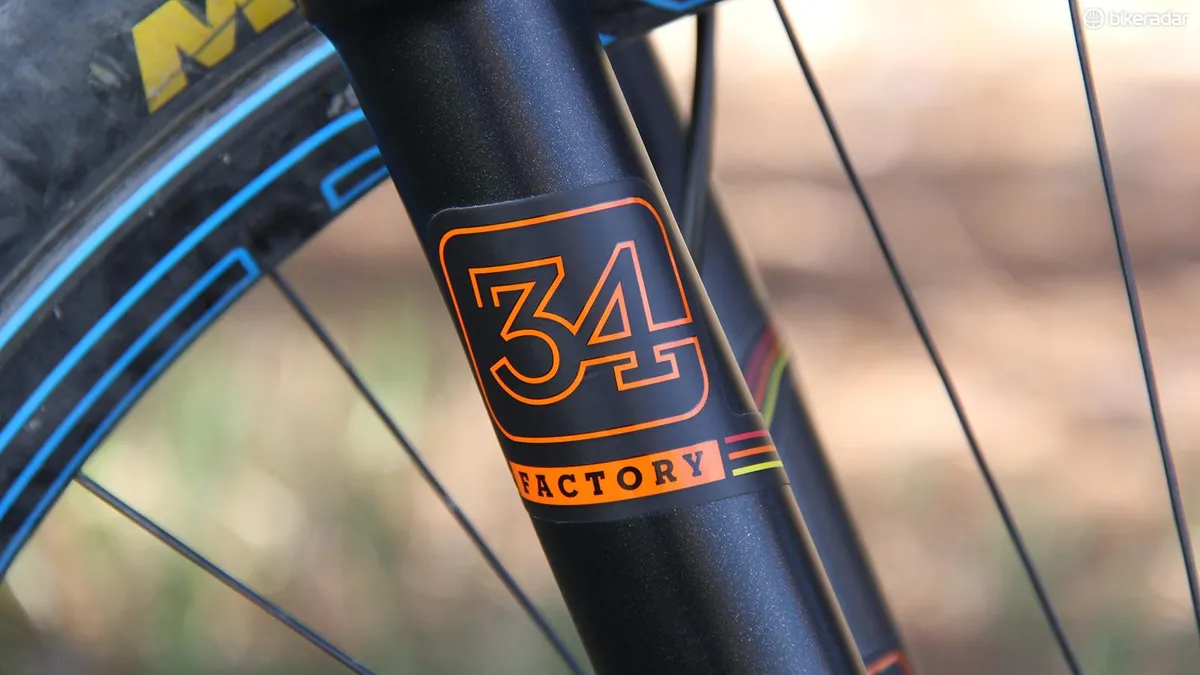For the 2016 model year Fox Racing Shox has restyled its 34 Float fork line by focusing on taking weight out of the chassis and introducing entirely new air spring and damper assemblies that borrow heavily from the very capable 36 series.
Fox racing shock 2016 34 float – first ride
A reimagined trail fork
Fox has adapted technology originally developed for the 36 Float FIT RC2 into the redesigned 2016 34 Float. The company states that its cartridge damper, now in its fourth generation and aptly named FIT4, offers increased compression damping control as well as superior rebound damping than previous versions.
Fox adapted the larger, 10mm damper shaft used on the 36 RC2 for the 34 line. This larger diameter assembly is said to allow for increased oil flow through the compression circuit.
Rebound damping is improved through the use of dual rebound circuits, which Fox claims offer more controlled return from hard hits and quicker recovery from successive impacts.
New three-position system
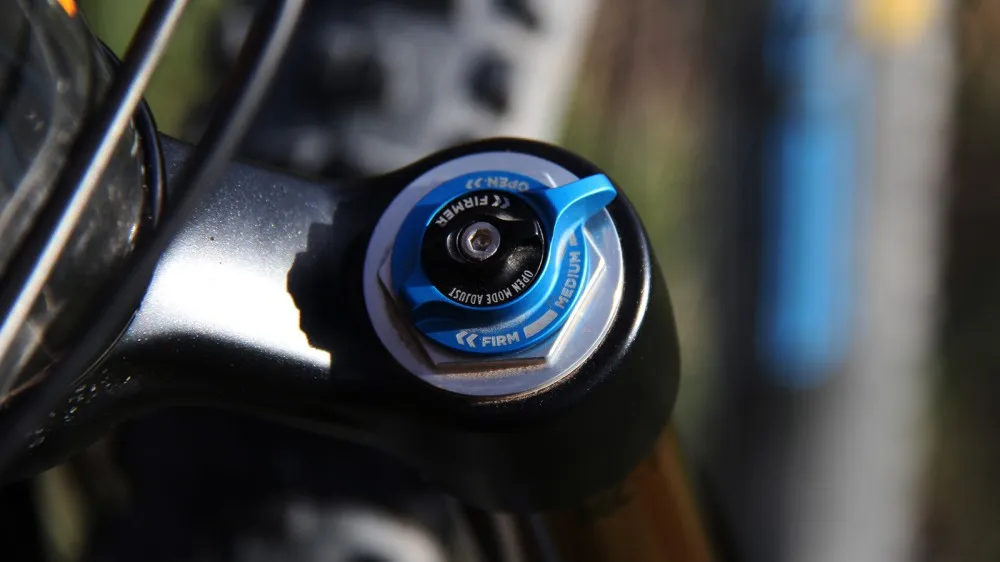
Fox has parted ways with the three-position CTD system it introduced for the 2013 model year. The ‘Climb, Trail, Descend’ nomenclature has been replaced with the more aptly-named ‘open, medium and firm’ compression damping settings.
This new on-the-fly low-speed compression adjustment layout differs slightly, but significantly, from the CTD system it replaces.
Where CTD gave riders a fully-open mode descend mode, a user-tunable trail mode, and a locked-out climb mode, the new FIT4 system shifts the fine-tuning from the position formerly known as trail, and now know as medium, to the open position.
In open mode, the rider can fine-tune the level of low-speed compression damping with an expansive 22-click adjustment range.
Updated air spring

It’s not just the damper-side of the new 34 that gets a makeover. Fox has replaced the coil negative spring employed thus far on 34 and 32 Float forks with a self-equalizing positive/negative air chamber system adapted from the 36 series.
Fox claims the new air spring layout will offer smoother performance and transmit less vibration. It also sheds 125g.
The negative air spring, in conjunction with a retooled chassis, result in a total weight reduction of more than 200g when compared to last year’s model. Our 150mm 27.5in test fork weighed in at 1,750g (3.86lb).
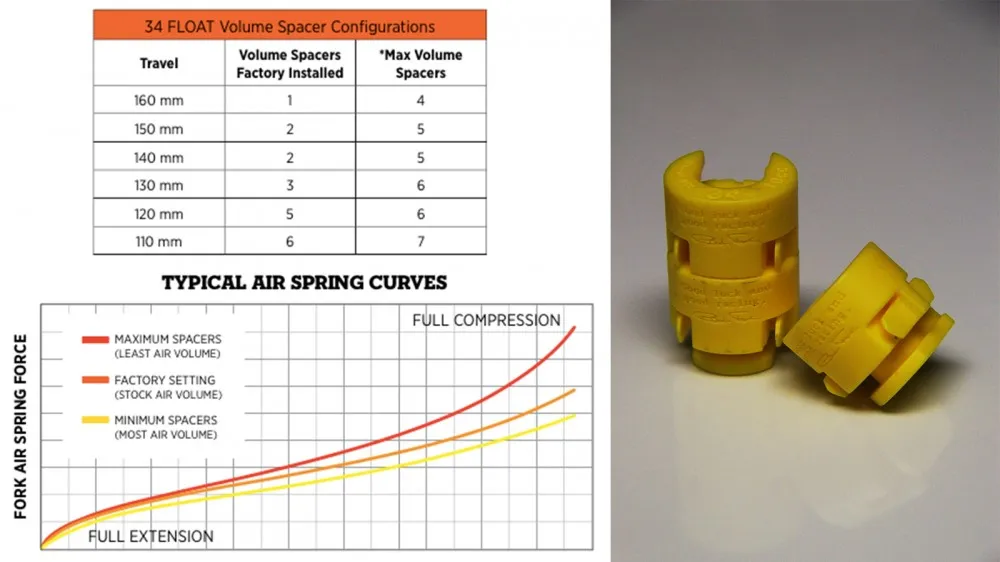
In addition to shedding grams, the new, self-balancing air spring offers riders the ability to adjust mid-stroke support and bottom-out resistance by adding or subtracting air volume spacers.
On the trail
I spent three days testing the new 34 Float on the rocky trails surrounding Fruita and Grand Junction, Colorado. The terrain varied from loose-over-hardpack, to slickrock, to extended rock gardens.
The loose-over-hardpack sections tested the fork’s small-bump sensitivity and ability to maintain traction, while the numerous rock gardens were the crucible for proving the new 34 Float’s ability to maintain composure during successive high-velocity impacts.
Small-bump sensitivity was quite good, but that’s not what aggressive trail riders had grievances with in past versions of the 34. This new 34 is markedly better at absorbing medium and large impacts without pushing too deep into its travel.
The new compression damping adjustment layout is highly intuitive. The wide range of adjustment in the open setting ranges from ultra plush to as firm as the middle, medium compression position.
It’s worth noting that the medium compression position is notably firmer than previous 34 Floats. Some riders, including many of BikeRadar’s editors, had previously sought to combat excessive compression by setting and leaving their 34 forks in the trail position.That was never needed with this fork. The open mode with eight clicks of compression damping dialed in gave the fork enough composure to handle successive hits encountered during rocky descents.
While some riders, including this tester, may feel that lockouts are a superfluous feature on trail forks, the firm mode is nearly rock-solid, should you feel the need to use it.

The new compression adjustment offers open, medium and firm levels of compression damping, but allows the rider to fine-tune the open position, rather than the trail position
As for the adjustable air spring, 150mm-travel 27.5in forks come with two 10cc volume spacers pre-installed. Three more spacers can be added, should riders desire a firmer mid-stroke and more bottom-out resistance. As it was, I felt the spring curve was spot-on for the task at hand, but a bit of tinkering is in order before publishing the long-term review.
Verdict
The trickle-down technology from the 36 series is a welcome addition to the Fox 34 Float line. While aggressive riders, along with many of our own testers, found previous iterations of the 34 lacking in terms of mid-stroke support, the latest 34 Float delivers sensitivity and increased support in a lighter, more tunable package.
I along with other BikeRadar testers need to put many more miles on the 34 Float before we weigh in with our long-term review, but initial testing has proven that the praise that was heaped on the reworked 36 series may rightfully make its way to the 34 Float.
